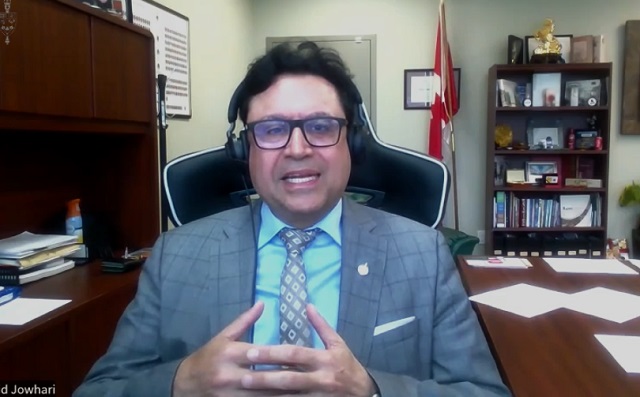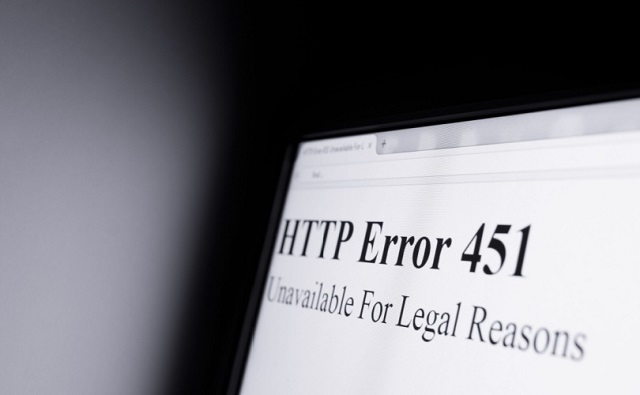News
Red Deer Mounties Arrest Suspected Truck Thief
A man suspected of crashing a stolen truck in south Red Deer was tracked down by a police dog early Friday morning.
The suspect was found hiding in a yard in the Inglewood neighbourhood after Mounties contained the area between 40 Avenue and Ingersoll Street, and Ironside Street to 19 Street.
RCMP say the truck collided with two vehicles and damaged the alley’s cable fence and an electrical pole.
A 25 year old Red Deer man will face charges for dangerous operation of a motor vehicle, failing to remain at the scene of an accident, obstruction of a peace officer, mischief, possession of stolen property over $5,000, and failing to comply with a probation order. His name cannot be released at this time as those charges have not been sworn before the courts.
(Thumbnail courtesy of Alberta RCMP)
Media
Trudeau’s Online News Act has crushed hundreds of local Canadian news outlets: study

From LifeSiteNews
Trudeau’s Online News Act, framed as a way to support local media, has hurt small media outlets while giving massive payouts to legacy media, a study has found.
According to a new study, Prime Minister Justin Trudeau’s Online News Act has successfully crushed local media outlets while mainstream media has remained relatively unaffected.
According to an April study from the Media Ecosystem Observatory, Trudeau’s Online News Act, also known as Bill C-18, has caused a 84 percent drop in engagement for local Canadian outlets, as Big Tech company Meta – the parent company of Facebook and Instagram – has refused to publish links to Canadian news outlets on their platforms.
“We lost 70 per cent of our audience when that happened,” Iain Burns, the managing editor of Now Media Group, which manages news posts for outlets serving smaller communities, revealed. He further explained that he experienced a 50 percent loss in revenue following the move.
“We’re not the only ones. Many, many outlets are in this situation,” Burns added.
The Online News Act, passed by the Senate in June 2023, mandates that Big Tech companies pay to publish Canadian content on their platforms. While the legislation promised to support local media, it has seemingly accomplished the opposite.
While Meta has blocked all news on its platforms, devastating small publishers, Google agreed to pay Canadian legacy media outlets $100 million to publish their content online.
The study, a collaboration between the University of Toronto and McGill University, examined the 987 Facebook pages of Canadian news outlets, 183 personal pages of politicians, commentators and advocacy groups, and 589 political and local community groups.
“The ban undoubtedly had a major impact on Canadian news,” the study found.
The study found a 84 percent drop in engagement for Canadian outlets, with small local news outlets being the most affected compared to larger government-funded outlets.
“Local news outlets have been particularly affected by the ban: while large, national news outlets were less reliant on Facebook for visibility and able to recoup some of their Facebook engagement regardless, hundreds of local news outlets have left the platform entirely, effectively gutting the visibility of local news content,” it explained.
However, LifeSiteNews has been relatively unaffected by the ban as viewership on its official Facebook page has remained relatively the same, similar to its Instagram account since most views already came from the United States.
Similarly unaffected was Meta: “We find little evidence that Facebook usage has been impacted by the ban.”
“After the ban took effect, the collapse of Canadian news content production and engagement on Facebook did not appear to substantially affect users themselves,” the study said.
While local media outlets’ viewership has declined thanks to Trudeau’s new legislation, larger media outlets have thrived due to increased payouts from the Trudeau government.
Legacy media journalists are projected to have roughly half of their salaries paid by the Liberal government after the $100 million Google agreement and the subsidies outlined in the Fall Economic Statement.
Mainstream Canadian media had already received massive federal payouts, but they have nearly doubled after Trudeau announced increased subsidies for legacy media outlets ahead of the 2025 election. The subsidies are expected to cost taxpayers $129 million over the next five years.
However, just as government payouts increase, Canadians’ trust in mainstream media has decreased. Recent polling found that only one-third of Canadians consider mainstream media trustworthy and balanced.
Similarly, a recent study by Canada’s Public Health Agency revealed that less than a third of Canadians displayed “high trust” in the federal government, with “large media organizations” as well as celebrities getting even lower scores.
Indigenous
No accounts on $7.9 million dollar ‘Truth’ Fund
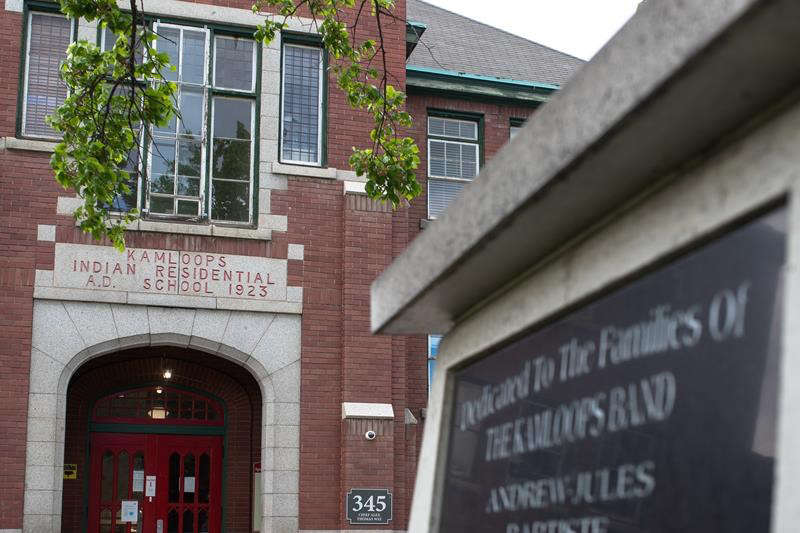
From the Frontier Centre for Public Policy
The First Nation prompted an international outcry in 2021 when it announced the discovery of 215 children’s graves hidden at the Kamloops Residential School. It said remains were found using ground penetrating radar.
Cabinet at the time lowered the Peace Tower flag at half mast for 161 days, approved $3.1 million for a national Residential Schools Student Death Register and another $238.8 million for a Residential Schools Missing Children Community Support Fund.
The Department of Crown-Indigenous Relations has confirmed it spent millions to uncover the “heartbreaking truth” of unmarked Indian Residential School graves in Kamloops, B.C. No remains have been recovered to date and no accounting of what became of the $7.9 million has been disclosed.
“The community had received $7.9 million for field work, records searches and to secure the Residential School grounds,” said Carolane Gratton, spokesperson for the department. “Details of initiatives taken by Tk’emlups te Secwepemc First Nation are best directed to the community.”
The department has not released financial accounts under the Access To Information Act. The First Nation said in a statement it “continues to grieve children that are in our care and are focused on the scientific work that needs to be done” but would not discuss the $7.9 million.
The 2021 funding was to document the “heartbreaking truth,” according to a 2022 department briefing note. “Our thoughts are with survivors, their families and communities as the heartbreaking truth about Residential Schools’ unmarked burials continues to be unveiled,” said the note.
“Funding is available to support communities, survivors and their families on their healing journey through researching, locating and memorializing those children who died while attending Indian Residential Schools,” said the note Indian Residential School Sites: Unmarked Burials.
“If pressed on Tk’emlups te Secwepemc Kamloops Indian Residential School site, the Government of Canada has provided $7.9 million over two years to the Tk’emlups te Secwepemc Nation to support the community in conducting this important work,” said the note.
The First Nation prompted an international outcry in 2021 when it announced the discovery of 215 children’s graves hidden at the Kamloops Residential School. It said remains were found using ground penetrating radar.
Cabinet at the time lowered the Peace Tower flag at half mast for 161 days, approved $3.1 million for a national Residential Schools Student Death Register and another $238.8 million for a Residential Schools Missing Children Community Support Fund. The Fund expires in 2025.
“I think Canadians have seen with horror those unmarked graves across the country and realize that what happened decades ago isn’t part of our history, it is an irrefutable part of our present,” Prime Minister Justin Trudeau earlier told reporters.
No remains have been recovered at the Kamloops site to date. A Senate committee in a 2023 report described questions regarding documentation of the 215 graves as “Residential School denialism.”
“Denialism serves to distract people from the horrific consequences of Residential Schools and the realities of missing children, burials and unmarked graves,” said the Senate Indigenous peoples committee report Honouring The Children Who Never Came Home. It recommended “the Government of Canada take every action necessary to combat the rise of Residential School denialism.”
Published with kind permission from Blacklock’s Reporter. First published here.
Blacklock’s Reporter (founded October 2012) is an Ottawa-based Internet publication covering Canadian government administration.
-

 Brownstone Institute12 hours ago
Brownstone Institute12 hours agoMusk Wins Latest Censorship Battle in Australia
-

 Brownstone Institute11 hours ago
Brownstone Institute11 hours agoWHO Accords Warrant Sovereignty Concern
-
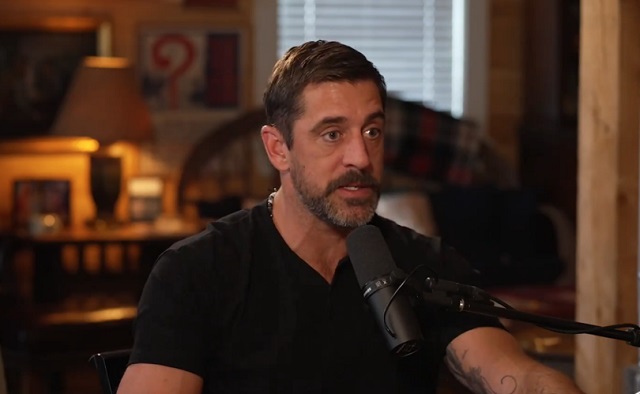
 COVID-1914 hours ago
COVID-1914 hours agoTucker Carlson and NFL star Aaron Rodgers discuss Bill Gates, COVID-19, US Deep State
-
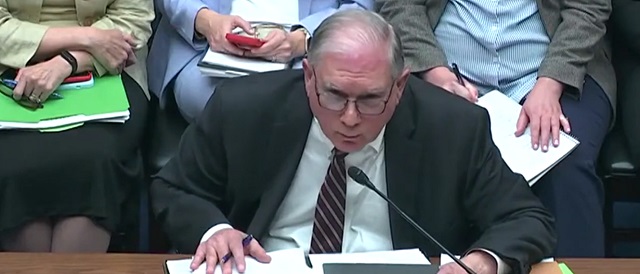
 COVID-1913 hours ago
COVID-1913 hours agoTop Fauci Aide Allegedly Learned To Make ‘Smoking Gun’ Emails ‘Disappear,’ Testimony Reveals
-

 Food6 hours ago
Food6 hours agoThe Bee-pocalypse: Another Scare Story the Media Got Wrong
-

 COVID-1910 hours ago
COVID-1910 hours agoMalaysian doctor goes viral after apologizing for administering COVID shots
-

 Censorship Industrial Complex9 hours ago
Censorship Industrial Complex9 hours agoAustralia passes digital ID bill, raising fears of government surveillance without accountability
-

 Energy15 hours ago
Energy15 hours agoTech giants’ self-made AI energy crisis




